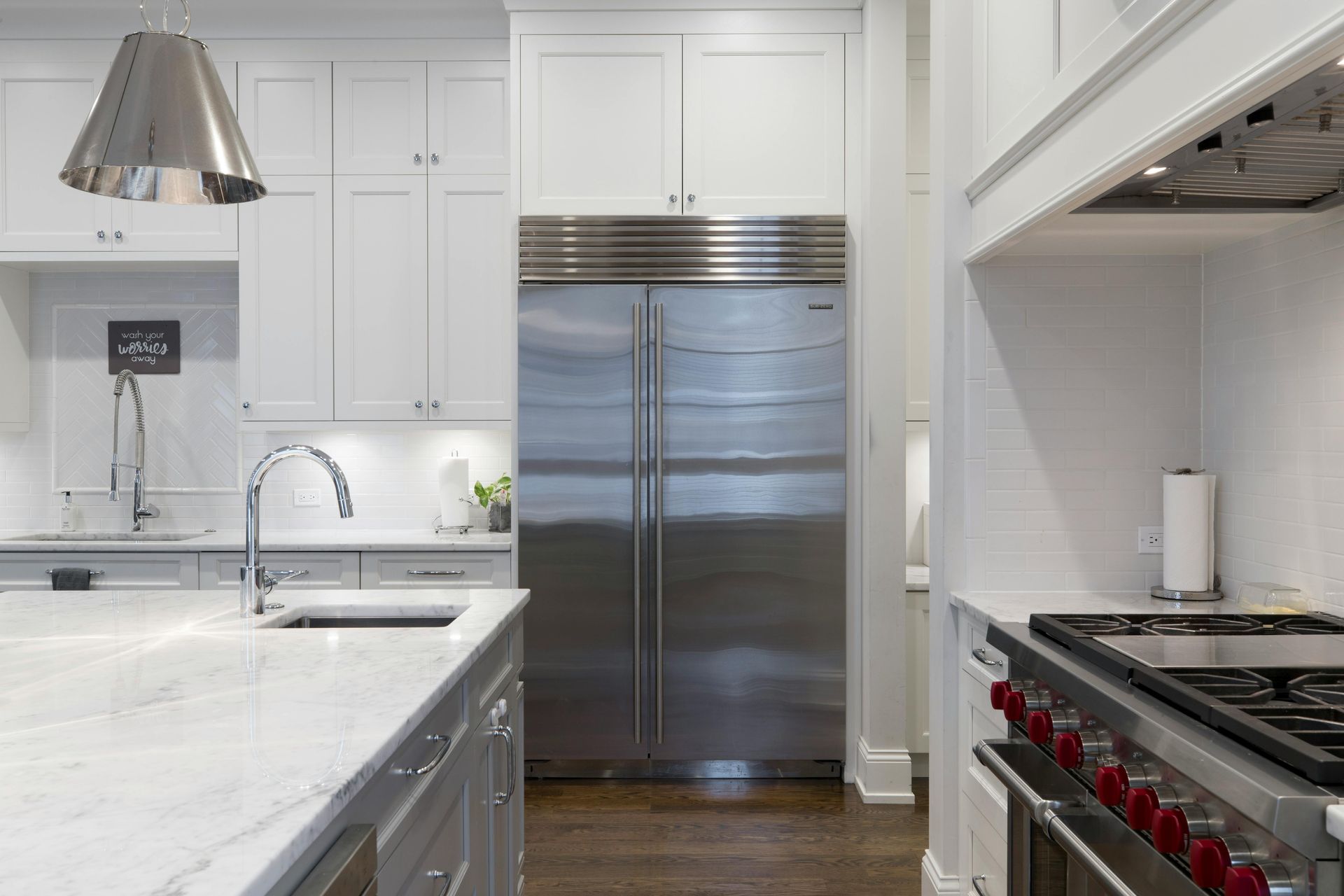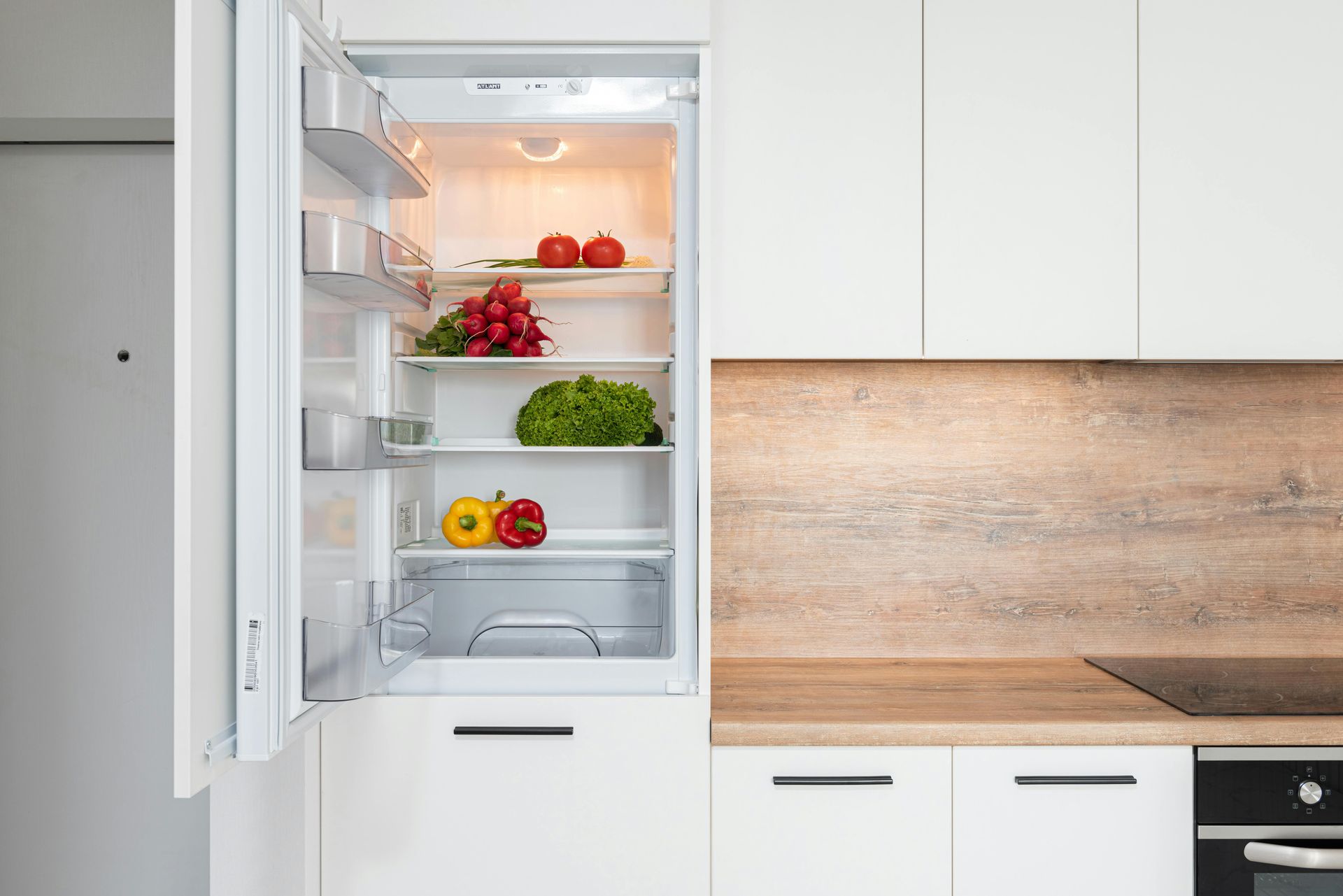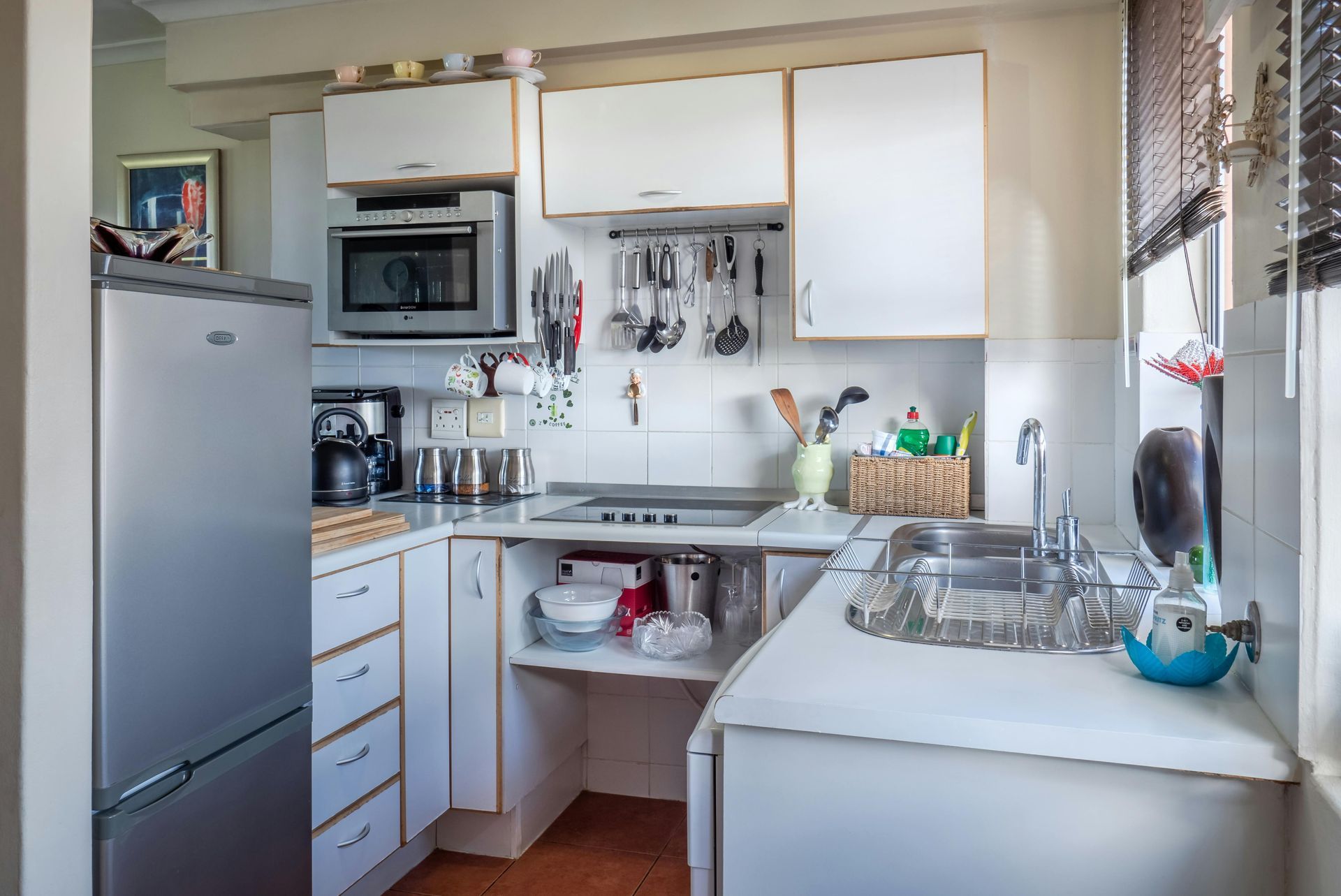Refrigerator Ice Maker Not Working—Solved!
Is your refrigerator ice maker not working (again)?
Few things are more frustrating than opening your freezer expecting ice and finding none.
If your refrigerator ice maker is not working, don't panic.
Whether you have an LG fridge, a built-in unit, or a standard refrigerator, this guide will walk you through
common causes, solutions, maintenance tips, and
repair advice to help you get things running again.

Common Causes of Ice Maker Problems
Understanding what’s causing your refrigerator's ice maker not to work can make troubleshooting much easier. Here are some of the most common culprits behind ice maker issues:
1. Clogged or Frozen Water Line
A blocked or frozen fill tube prevents water from reaching the ice maker. This often occurs when the freezer temperature is too low or there’s insufficient insulation around the water line.
2. Faulty Water Inlet Valve
The water inlet valve controls the flow of water into the ice maker. If it malfunctions, the ice tray won’t fill, resulting in the ice maker not filling with water.
3. Defective Ice Maker Motor or Ejector Assembly
If your unit stops producing ice or doesn't release cubes, the motor that drives the ejector arms may be worn out or jammed.
4. Temperature Issues
Freezer temps above 10°F can halt ice production. Always check that your freezer is cold enough for proper ice formation.
5. Clogged or Old Water Filter
A dirty filter can restrict water flow to the ice maker. If you haven’t replaced yours in over six months, it might be time for a new one.
6. Full Ice Bin or Faulty Bin Sensor
Most ice makers have a sensor that detects when the bin is full. If it’s malfunctioning, it may shut off ice production prematurely, even if the bin is empty.
7. Power or Control Board Issues
Power surges, wiring problems, or a failing control board can disrupt signals to the ice maker, leading to erratic behavior or a complete shutdown.
Simple and Quick Tips to Prevent a Broken Fridge Ice Maker
Prevention is always better than repair, especially when it comes to your refrigerator ice maker not working. A few simple habits and occasional checks can go a long way in keeping your ice maker running smoothly and reliably.
Here’s how to stay ahead of potential issues:
1. Use the Ice Maker Regularly
Just like any mechanical device, your ice maker benefits from regular use. When it sits idle for too long, ice can clump together, the mold may freeze over, and moving parts like ejector arms or motors can seize up. Even if you don’t use a lot of ice, run a cycle every few days to keep things moving and avoid jams.
2. Maintain Proper Freezer Temperature
Temperature plays a critical role in ice production. The freezer should stay between 0°F and 5°F (-18°C to -15°C). If it's too warm, ice may not form properly; too cold, the fill line can freeze. Keep a thermometer inside your freezer and adjust the settings if needed. Sudden changes in temperature are also a common cause of a fridge ice maker not making ice.
3. Avoid Overpacking the Freezer
A cluttered freezer restricts airflow, which can cause uneven cooling. If cold air doesn’t circulate properly, the ice maker might not get cold enough to operate efficiently. Try to organize your items and leave space around the ice maker for optimal ventilation.
4. Replace the Water Filter Every 6 Months
Most refrigerators with built-in ice makers also have a water filtration system. Over time, these filters can become clogged with minerals or debris, reducing water flow to the ice maker and leading to a refrigerator ice maker not working. Mark your calendar or set a reminder to change the filter twice a year—even sooner if you have hard water.
5. Inspect the Water Supply Line
The water line feeding your ice maker can sometimes become kinked, frozen, or clogged with sediment. A restricted line means the ice tray won’t fill properly, resulting in small cubes, no cubes, or an ice maker not filling with water at all. Periodically check behind your fridge to ensure the water line is straight and in good condition.
6. Clear the Ice Bin Frequently
Even if your ice maker is working, letting ice sit too long can cause clumping, jamming the dispenser, or causing a backup in the cycle. Use the ice regularly or empty and clean the bin every few weeks to keep things fresh and operational.
7. Listen for Unusual Noises
Clicking, buzzing, or grinding noises could indicate that the motor or gears inside the ice maker are struggling. Don’t ignore these early warning signs—addressing them promptly can prevent a full breakdown.
8. Don’t Ignore Small Problems
If your ice maker is slow, producing smaller cubes, or making strange noises, take action sooner rather than later. Minor issues are often quick to fix and can help you avoid a larger repair bill down the line.
By following these practical tips, you can reduce the risk of running into problems like your refrigerator not making ice but water works, and extend the life of your ice maker. Preventive care ensures your fridge is always ready to deliver clean, fresh ice whenever you need it.

How to Maintain the Good Condition of an Ice Maker
Routine care can extend your ice maker’s life:
- Clean the ice bin regularly to prevent mold and odors.
- Run a cleaning cycle if your model includes it, or manually clean the mechanism with warm water and mild detergent.
- Inspect moving parts like ejector arms and blades for buildup.
- Defrost the freezer if ice buildup is visible near the ice maker or fan vents.
How to Unclog an Ice Maker in a Built-In Refrigerator
In built-in models, blockages are common and can halt ice production. Here's how to address that:
- Turn off the refrigerator or unplug it.
- Check the fill tube (usually above the ice tray) for frozen water. If it’s iced over, use a hair dryer on low or warm towel to thaw.
- Remove the ice bin and look for clumps that may be jamming the mechanism.
- Flush the water line if needed using a turkey baster and warm water to dislodge the buildup.
- Restart your fridge and test for functionality after 30 minutes.
This method often resolves issues like your ice maker not filling with water or the refrigerator not making ice but water works issue.
Refrigerator Ice Maker Not Working: DIY Approach
For basic repairs, follow these steps:
- Inspect the water inlet valve for clogs or failure.
- Test the water pressure to ensure it meets the fridge’s requirements (usually 20–120 psi).
- Check the control module for damage or burnout.
- Replace faulty sensors or the ice mold heater if it's not ejecting cubes.
Most parts are available online or at appliance stores. But if you're unsure about DIY fixes, it’s safer to call a technician, especially when your refrigerator ice maker is not working despite all efforts.
How to Fix an Ice Maker on an LG Refrigerator?
LG ice makers have specific quirks. Here's how to troubleshoot:
- Reset the ice maker using the reset button located under the ice tray.
- Run a diagnostic test through the smart diagnosis app (if available).
- Check the Smart Inverter Compressor function, as cooling issues can impact ice production.
- Inspect for known LG sensor faults, especially in older models.
For persistent issues, LG support or certified technicians can help resolve LG-specific ice maker problems.
Why Is My Ice Maker Not Working But the Water Does?
If your ice maker is not working but the water does, it typically points to:
- Frozen water fill tube: The water line to the ice maker may be frozen, even if water still flows from the dispenser.
- Faulty ice maker motor or ejector gear: These components can wear out over time.
- Control board issues: Sometimes, a programming glitch prevents the ice maker from receiving commands.
- Full ice bin sensor: If the bin sensor is malfunctioning, it might falsely detect that the bin is full.
Troubleshooting these specific parts is key to restoring function.
How Much Does It Cost to Repair an Ice Maker?
Repair costs vary based on your refrigerator’s brand and the specific part needing replacement:
- Simple fixes (e.g., clogged lines, frozen tubes): $75–$150
- Part replacements (motors, valves): $100–$300
- Full ice maker replacement: $250–$500
- LG or smart fridge components: May run higher due to brand-specific parts and labor
It’s a good idea to get estimates from local professionals before committing to a repair, especially when your
refrigerator ice maker is not working consistently.

Where to Seek Help if the Ice Maker Won’t Work After Basic Troubleshooting
If your refrigerator ice maker is not working even after trying all the basic fixes, it may be time to bring in professional help. Fortunately, there are several avenues you can explore depending on your appliance’s age, brand, and warranty status:
1. Appliance Repair Companies Near You
Start by searching online for “refrigerator ice maker repair near me” or “appliance repair services near me.” These specialists are trained to diagnose and fix common issues like an ice maker not filling with water, faulty thermostats, or malfunctioning control boards. Many offer same-day service, which is especially helpful if you need your ice maker running again quickly.
2. Manufacturer Support
If your refrigerator is still under warranty, or if it's a high-end model, contacting the manufacturer may be your best option. Companies like LG, GE, Samsung, and Whirlpool have customer service lines, online support portals, and a network of authorized service centers. In some cases, they can guide you through advanced troubleshooting steps over the phone or schedule a certified technician for a home visit.
3. Local Handyman Services
For older refrigerators or those no longer under warranty, hiring a local handyman can be a budget-friendly solution. While they may not specialize in every model, experienced handymen can often handle straightforward issues like replacing a clogged valve or repositioning a misaligned water line.
4. Certified Technicians for Built-In or Smart Models
If you own a built-in or smart refrigerator, hiring a certified technician is essential. These models are more complex, and improper handling can lead to more expensive damage. A certified pro will be familiar with the internal wiring, control boards, and proprietary components necessary to restore your refrigerator ice maker to working condition.
5. Home Warranty or Appliance Insurance Providers
If you have a home warranty or appliance insurance, check whether ice maker repairs are covered. Many service agreements include free or low-cost repairs for common refrigerator issues. Contact your provider to schedule a technician without paying out-of-pocket.
6. Retailer Service Plans
If you purchased your refrigerator from a major retailer like Lowe’s, Home Depot, or Best Buy, and opted for an extended service plan, reach out to their service department. These plans often include in-home diagnostics and repairs at little or no extra cost.
Before scheduling service, gather important information such as the refrigerator’s make, model number, serial number, and a brief description of the issue (e.g., fridge ice maker not making ice or refrigerator not making ice but water works). This helps technicians come prepared with the right tools and parts.
By turning to qualified professionals, you can avoid unnecessary guesswork, prevent further damage, and ensure your ice maker is repaired efficiently and correctly.
Final Thoughts
Dealing with a refrigerator ice maker not working can be frustrating, but it doesn’t always require professional repair. With the right maintenance habits and a little troubleshooting, many common issues can be solved at home. From cleaning and resetting to replacing worn-out components, understanding how your ice maker functions gives you the upper hand.
If you’ve tried everything and your
fridge ice maker is still not making ice,
Twin City Appliance is just a call away. Staying on top of maintenance and quick fixes can save time, money, and the hassle of living without ice.
